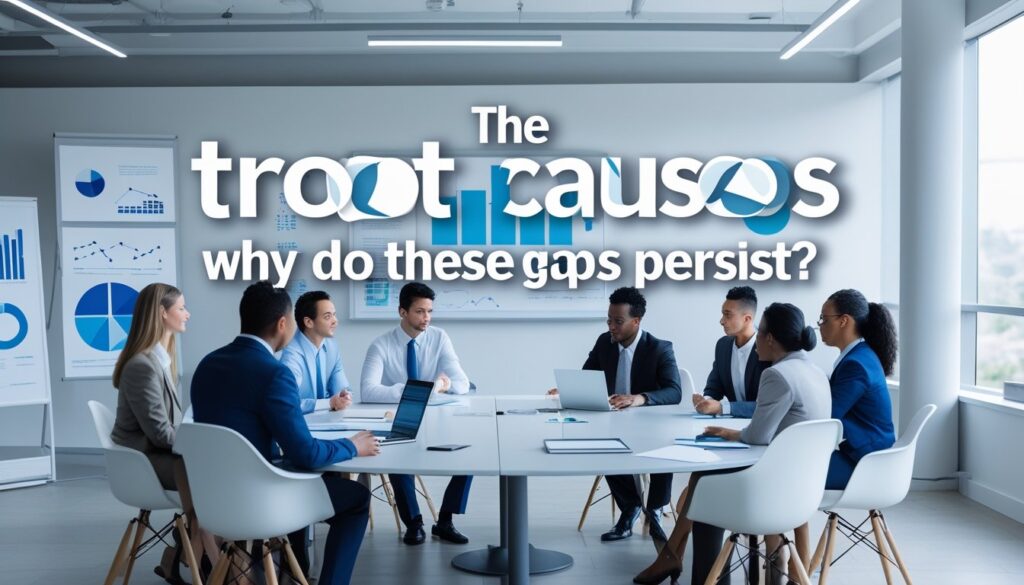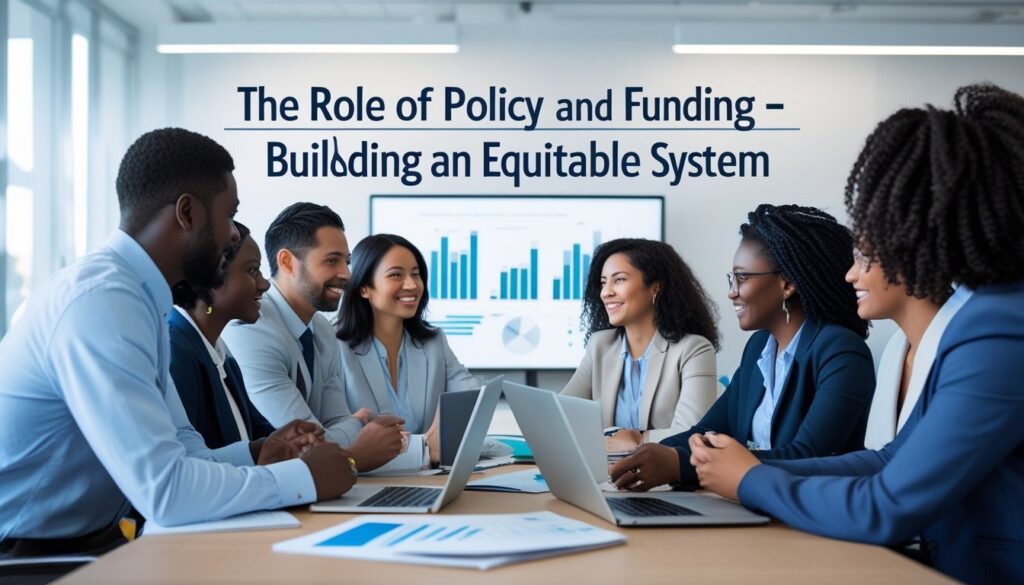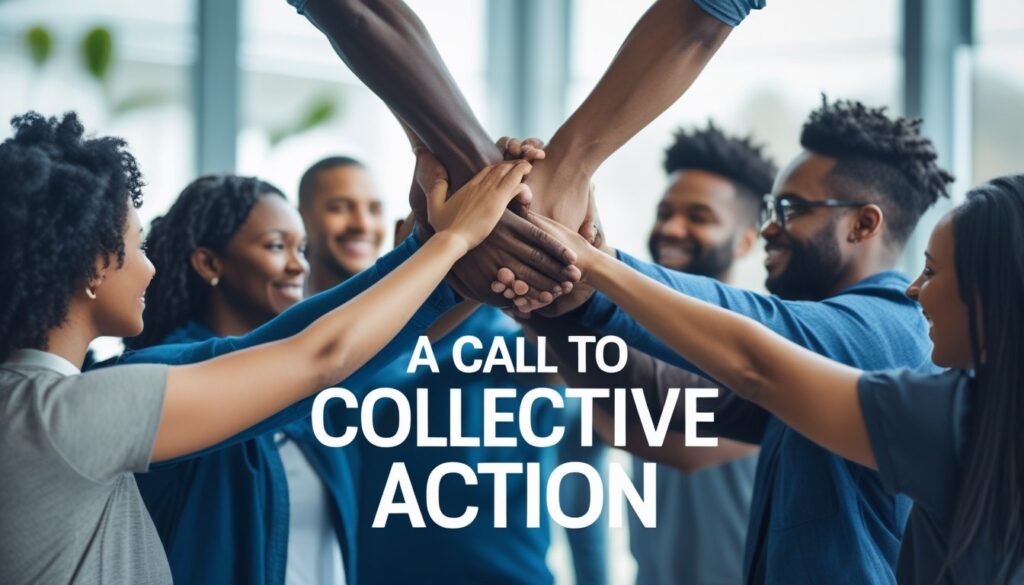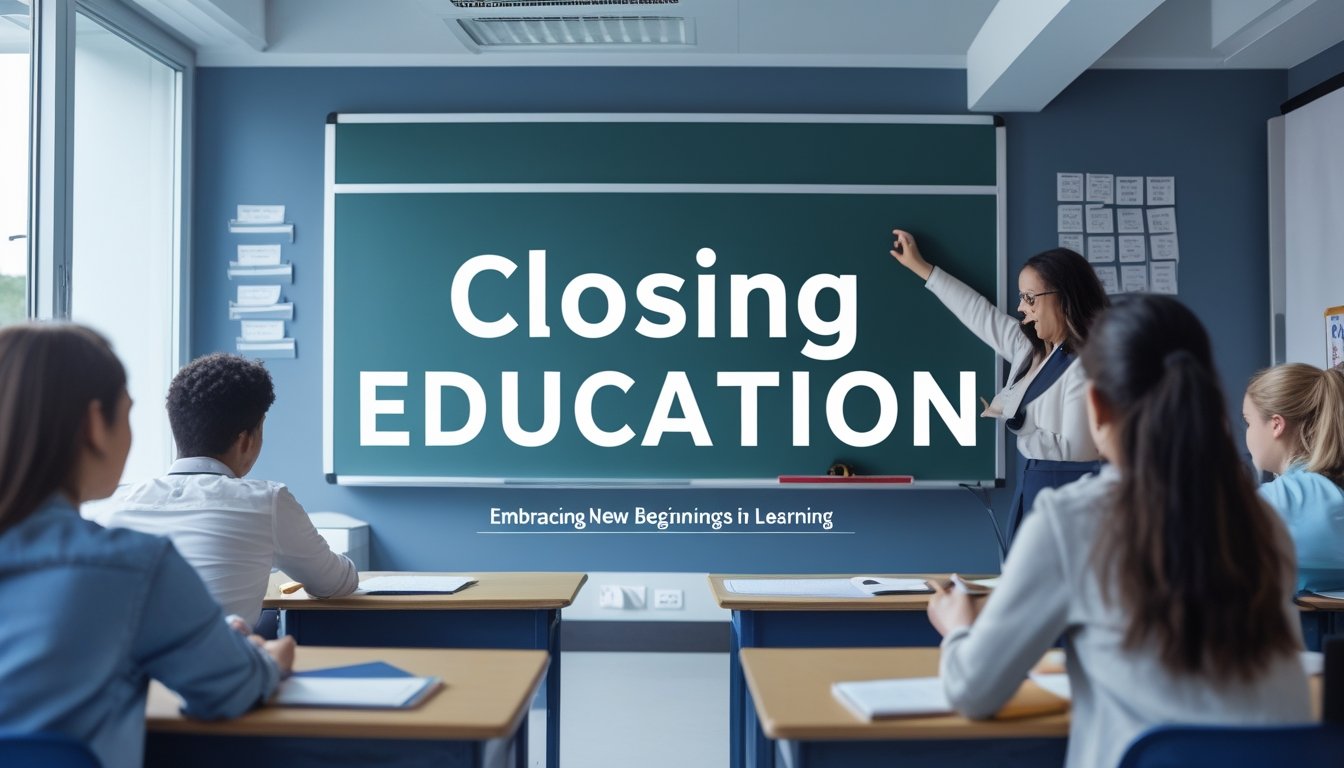Explore the critical issue of Closing Education gaps—learning loss, opportunity gaps, and the digital divide. This 7,000-word guide covers root causes, innovative solutions, and a future-proof vision for an equitable education system.

Education has long been heralded as the great equalizer, the engine of social mobility, and the foundation of a prosperous society. Yet, for decades, a persistent and troubling reality has undermined this ideal: the existence of profound educational gaps. These are not just minor discrepancies in test scores; they are chasms of opportunity, resources, and outcomes that separate students along lines of socioeconomic status, race, geography, and ability. The mission of Closing Education gaps is the most pressing challenge and the most significant opportunity facing our world today.
The term “Closing Education” refers to the multi-faceted, systemic effort to identify, understand, and eliminate the disparities in educational achievement and access. It encompasses everything from addressing pandemic-induced learning loss to tackling centuries-old inequities in funding and representation. It’s not about bringing every student to the same mediocre midpoint, but about ensuring that every single child, regardless of their starting point in life, has the support, resources, and inspiration to reach their full academic and human potential.Closing Education
This article is a deep dive into the complex world of Closing Education. We will dissect the problem from every angle: understanding the different types of gaps, analyzing their root causes, and evaluating the most promising solutions. We will move beyond the classroom to explore the role of technology, policy, community, and the economy. This is more than an analysis; it is a call to action and a blueprint for building an education system that truly leaves no child behind.
Part 1: Diagnosing the Problem – The Many Faces of the Education Gap
Before we can solve a problem, we must define it with precision. The “education gap” is not a single, monolithic issue but a network of interrelated disparities.
The Achievement Gap: The Most Visible Symptom
The achievement gap is the disparity in academic performance between different groups of students, most commonly measured by standardized test scores, graduation rates, and college enrollment statistics.
- Historical and Racial Disparities: For generations, standardized test results have consistently shown a performance gap between White and Asian students and their Black, Hispanic, and Native American peers. This is not a reflection of intelligence or capability, but a symptom of systemic inequities.
- Socioeconomic Divide: Perhaps the most powerful predictor of academic achievement is a child’s socioeconomic status. Students from low-income families often enter school with smaller vocabularies and less exposure to literacy-rich environments, a gap that can widen without intervention.
- The Pandemic’s Amplifying Effect: The COVID-19 pandemic acted as an inequity amplifier. The switch to remote learning created a “COVID Slide,” but its impact was wildly uneven. Students with reliable internet, quiet study spaces, and parental support stayed afloat, while those without these privileges fell further behind, creating a seismic learning loss that experts are still quantifying.
The Opportunity Gap: The Root Cause
The achievement gap is merely the output; the opportunity gap is the input. This refers to the stark differences in access to the resources and conditions that enable learning.
- Funding Inequities: In many countries, including the United States, school funding is often tied to local property taxes. This creates a vicious cycle: wealthier communities have well-funded schools with smaller class sizes, updated technology, and abundant extracurriculars, while poorer communities are trapped in under-resourced systems. Closing Education funding gaps is a fundamental prerequisite for progress.
- Teacher Quality and Distribution: High-poverty schools are more likely to employ less-experienced teachers, teachers working outside their field of certification, and to suffer from higher teacher turnover rates. Students in the most challenging circumstances are often denied access to the most stable, expert teaching talent.
- Curriculum and Access to Rigorous Courses: There is a significant gap in access to Advanced Placement (AP), International Baccalaureate (IB), and gifted and talented programs. Students in affluent schools are encouraged to take these college-prep courses, while those in under-resourced schools may not even have them available. This is sometimes referred to as “curriculum tracking,” which can perpetuate inequality.
The Digital Divide: The 21st-Century Chasm
In today’s world, digital access is not a luxury; it is a prerequisite for education. The digital divide has three core components:
- Access to Devices and Broadband: The most basic level. Does a student have a reliable computer and a high-speed internet connection at home? The pandemic brutally exposed the millions of students who lacked this fundamental tool for remote learning.
- Digital Literacy: Having a device is not enough. Do students and their teachers have the skills to use technology effectively for learning, creation, and critical thinking? This includes the ability to evaluate online information sources—a crucial skill in the age of misinformation.
- Digital Citizenship: This involves the responsible and safe use of technology. Closing Education gaps means ensuring all students understand cyberbullying, online privacy, and their digital footprint.
The Mindset Gap: The Psychology of Learning
Beyond resources and curriculum, there exists a critical psychological dimension. Stanford psychologist Carol Dweck’s research on “growth mindset”—the belief that intelligence can be developed—has profound implications. Students who believe their effort matters are more resilient in the face of challenges. Often, students from marginalized groups, subjected to negative stereotypes, can internalize a “fixed mindset,” believing their intelligence is static. Closing Education gaps requires closing this mindset gap by fostering self-belief and academic resilience.
Part 2: The Root Causes – Why Do These Gaps Persist?

The gaps we see in education are not natural or accidental. They are the direct result of interconnected historical, social, and economic forces.
Systemic and Structural Inequities
The education system does not operate in a vacuum. It reflects and reinforces the broader inequalities of society.
- Historical Legacy: The legacy of policies like redlining in the United States, which systematically denied mortgages to Black families in certain neighborhoods, created racially and economically segregated communities. This segregation directly translated into segregated and unequal school systems.
- Implicit Bias in the Classroom: Teachers, like all humans, hold unconscious biases. Studies have shown that these biases can affect classroom interactions, from how often a student is called on to the severity of disciplinary actions. Black students, for example, are disproportionately suspended and expelled for subjective infractions, a phenomenon known as the “school-to-prison pipeline.”
- Standardized Testing Controversy: While intended to be objective, standardized tests have been widely criticized for cultural bias. The language and contexts used in test questions often reflect the experiences of white, middle-class students, putting others at an inherent disadvantage.
The Impact of Poverty and Trauma
Poverty is more than a lack of money; it is a condition of chronic stress and scarcity that directly impacts a child’s ability to learn.
- Neuroscience of Adversity: Research on Adverse Childhood Experiences (ACEs) shows that trauma and chronic stress—common in environments of poverty—can disrupt brain development, impair executive function, and hinder the ability to focus and regulate emotions in the classroom.
- Resource Scarcity at Home: Families struggling with food insecurity, housing instability, and lack of healthcare are focused on survival. In these conditions, homework help and enrichment activities understandably become a lower priority, not due to a lack of care, but a lack of capacity.
Inadequate Teacher Preparation and Support
Teachers are the most important in-school factor for student success, yet the system often sets them up for failure, especially in high-needs schools.
- Lack of Culturally Responsive Training: Many teacher preparation programs do not adequately train educators to work effectively with diverse student populations. Culturally Responsive Teaching—which leverages students’ cultural backgrounds to make learning more relevant—is a specialized skill that is not yet standard.
- Burnout and Turnover: Teaching in under-resourced schools is incredibly demanding, leading to high rates of burnout and turnover. This constant churn destabilizes school culture and denies students consistent relationships with caring adults.
Part 3: The Solutions Toolkit – Strategies for Closing Education Gaps
There is no single magic bullet for Closing Education disparities. It requires a multi-pronged, sustained effort at every level of the system.
High-Dosage Tutoring: The Gold Standard for Academic Intervention
Research has consistently shown that high-dosage, small-group tutoring is one of the most effective interventions for catching students up academically.
- What It Is: Not occasional homework help. This is frequent (3-5 times per week), structured tutoring sessions with a consistent tutor, often integrated into the school day.
- Why It Works: It provides personalized instruction that a teacher in a class of 25+ cannot. It builds strong relationships and allows for immediate feedback. For Closing Education learning loss post-pandemic, scaling effective tutoring models is a top priority for districts nationwide.
The Science of Reading: A Foundational Approach to Literacy
The “reading wars” have, for the most part, been settled by neuroscience. The evidence is clear that systematic, phonics-based instruction is crucial for most children to learn to read.
- Ending the “Whole Language” Debate: Many schools are now retraining teachers in the “Science of Reading,” a evidence-based approach that combines phonemic awareness, phonics, fluency, vocabulary, and comprehension. For Closing Education gaps in early literacy, this shift is non-negotiable. States like Mississippi have seen remarkable gains by making this a statewide priority.
Extended Learning Time
For students who are behind, the standard 6-hour, 180-day school year is often insufficient.
- Summer School and Summer Programs: High-quality summer programs can prevent the “summer slide,” where students lose academic ground over the break.
- After-School Programs: These provide a safe, structured environment for academic support, enrichment (like arts and robotics), and mentorship.
- Year-Round Schooling: Some districts have adopted modified year-round calendars with more frequent, shorter breaks to reduce learning loss.
Wraparound Services: Supporting the Whole Child
Schools cannot address academic gaps in isolation from a child’s life circumstances. The community school model integrates health, mental health, and social services into the school building.
- School-Based Health Centers: Provide students with easy access to physical and mental healthcare.
- Food Pantries and Social Workers: Address basic needs so that students can focus on learning.
- Family Engagement Programs: Actively involve parents and caregivers as partners in their child’s education.
Part 4: The Role of Policy and Funding – Building an Equitable System

Lasting change requires shifting the underlying structures and incentives of the education system itself.
School Funding Reform
The current model of funding schools through local property taxes is fundamentally broken. Reform efforts include:
- Fair Funding Formulas: States are being sued and pressured to create funding formulas that direct more resources to districts with higher concentrations of poverty, English Language Learners, and students with disabilities.
- Weighted Student Funding: This model allocates money to schools based on the needs of their individual students, giving principals more autonomy to spend on what their specific population needs most.
Early Childhood Education: The Most Powerful Investment
The achievement gap is visible before children even enter kindergarten. Investing in high-quality early childhood education—from birth to age five—pays enormous dividends.
- The Research: Studies like the Perry Preschool Project and the Abecedarian Project showed that children who participated in high-quality early learning programs were more likely to graduate high school, hold jobs, and less likely to be incarcerated.
- Universal Pre-K: The push for publicly funded, high-quality pre-kindergarten for all 3- and 4-year-olds is a cornerstone strategy for Closing Education gaps at their origin.
Teacher Policy: Attracting and Retaining Talent
We need to make teaching in high-needs schools a rewarding and sustainable career.
- Loan Forgiveness and Financial Incentives: Offer significant student loan forgiveness and salary bonuses for teachers who commit to working in hard-to-staff schools and subjects.
- Improved Working Conditions: Reduce class sizes, provide dedicated planning time, and foster strong, supportive leadership from principals.
- Grow-Your-Own Programs: Develop teachers from within the community, which can increase diversity and cultural competency in the teaching workforce.
Part 5: The Technological Frontier – EdTech’s Role in Closing Gaps
Technology is not a silver bullet, but when used wisely, it can be a powerful lever for equity.
Personalized Learning Platforms
Adaptive learning software can assess a student’s current level and provide them with customized lessons and practice problems, allowing them to learn at their own pace. This can be particularly effective for remediation and enrichment.
Bridging the Digital Divide Permanently
The pandemic-era stopgap measures must become permanent infrastructure.
- Universal Broadband: Treating internet access as a public utility, like water or electricity, is essential for Closing Education in the 21st century.
- 1:1 Device Initiatives: Ensuring every student has a dedicated learning device is now a baseline requirement for an equitable school system.
Data Analytics for Early Warning Systems
Schools can use data to identify students who are at risk of falling behind long before they fail a class. Indicators like attendance, behavior, and course performance can trigger early interventions from counselors and teachers.
Part 6: The Human Element – Culture, Mindset, and Community
Ultimately, the most sophisticated policy or technology will fail without a supportive human ecosystem.
Cultivating a Growth Mindset Culture
Schools must explicitly teach students about neuroplasticity and the malleability of intelligence. Praise should focus on effort, strategy, and perseverance (“I can see you worked really hard on that”) rather than innate ability (“You’re so smart”).
Culturally Responsive and Sustaining Pedagogy
This goes beyond “diversity days.” It means:
- Curriculum Overhaul: Infusing the curriculum with diverse voices, histories, and perspectives so all students see themselves reflected in what they learn.
- Inclusive Classroom Culture: Creating an environment where every student’s background is valued as an asset to the learning community.
- High Expectations for All: Rejecting the soft bigotry of low expectations and holding all students to high standards of intellectual work.
Authentic Family and Community Engagement
Closing Education gaps cannot be a mission that schools undertake alone. It requires deep, authentic partnerships with families and community organizations. This means moving beyond transactional relationships (like parent-teacher conferences) to collaborative ones, where parents are seen as co-educators and partners in decision-making.
Part 7: The Future of Closing Education – A Lifelong, Holistic Vision
The goal is not just to close gaps in K-12 test scores. It is to build a seamless, equitable learning ecosystem from cradle to career.
From K-12 to Lifelong Learning
The future of work demands continuous skill development. Closing Education means ensuring adults have access to affordable upskilling and reskilling opportunities through community colleges, vocational training, and online platforms.
Social-Emotional Learning (SEL) as a Core Subject
Academic skills are insufficient for success in life. Integrating SEL—the teaching of skills like self-awareness, self-management, social awareness, relationship skills, and responsible decision-making—is proven to improve academic outcomes and well-being.
The Ultimate Goal: Educational Justice
Closing Education is not just an technical challenge; it is a moral imperative. It is about moving beyond equality (giving everyone the same thing) to equity (giving everyone what they need to succeed). It is about building a system where a child’s ZIP code, race, or family income no longer predicts their educational destiny.
A Call to Collective Action

The task of Closing Education gaps is monumental, but it is not insurmountable. We have the research, we have the tools, and we have a growing awareness of the urgency. What has been lacking is the collective will and the sustained focus to see it through.
This is not a problem that can be solved by teachers alone, or by parents, or by politicians. It requires a societal commitment—a pact that we will invest in every child as if they were our own. It requires business leaders to advocate for better schools, philanthropists to fund evidence-based solutions, community members to mentor and volunteer, and citizens to hold elected officials accountable.
The gaps in our education system are a reflection of the gaps in our priorities. Closing Education is, therefore, about more than schools; it is about who we are and who we aspire to be as a society. It is the foundational work of building a more just, prosperous, and unified future. The time for incremental change is over. The time for transformative action is now. Let us get to work.

